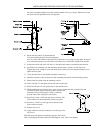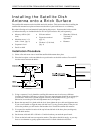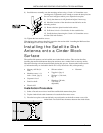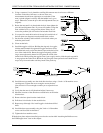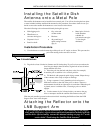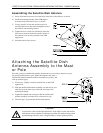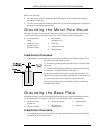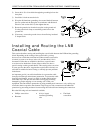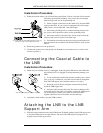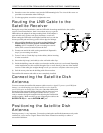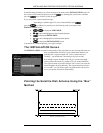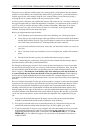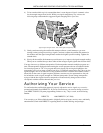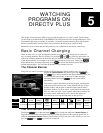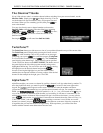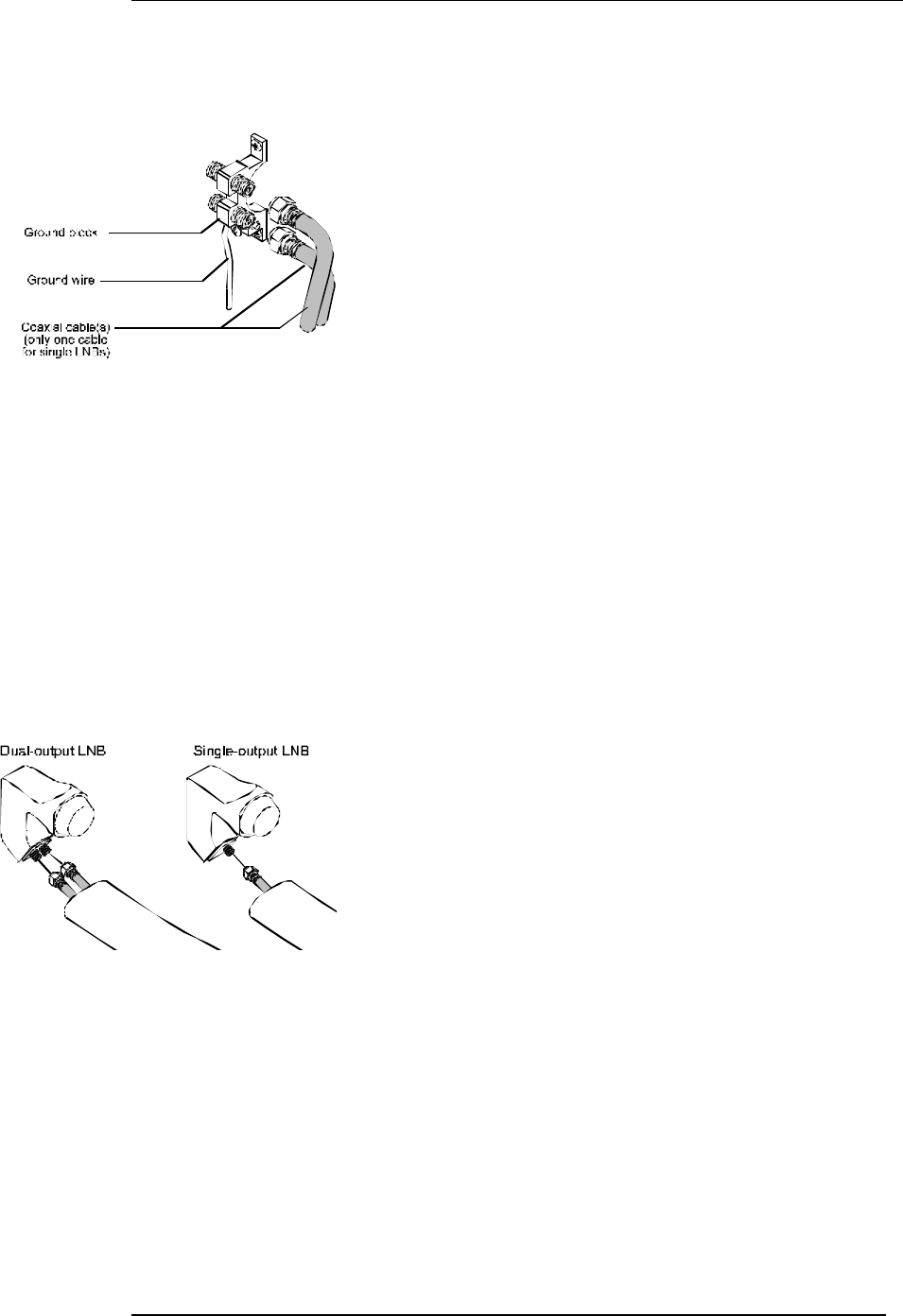
INSTALLING AND POINTING YOUR SATELLITE DISH ANTENNA
PAGE 4-15
Installation Procedure
1) Select the location where you will install the ground block. Choose a site that will be near the
cable entry point into the building. Also, plan a short and straight
path for the ground wire to the grounding rod.
2) Select a length of cable that can be routed easily from the LNB
to the ground block. If your system is equipped with a dual-output
LNB, select a second cable that’s the same length.
3) Secure the grounding block to a stable mounting surface with
two screws, then connect the cable(s) to the grounding block.
4) Secure the cable(s) with cable clips. Do not forget to form the
drip loop and secure it in place with cable clips.
5) Install the #14 insulated ground wire on the ground terminal of
the ground block in accordance with National Electric Code section
820-33.
6) Route the ground wire to the ground rod.
7) Connect the ground wire to the ground rod. Remember to secure the wire to a wall or some
surface to protect it.
Connecting the Coaxial Cable to
the LNB
Installation Procedure
1) Make sure your satellite receiver is unplugged. Connecting the LNB cable to the LNB while
the satellite receiver is plugged in could permanently damage your
LNB.
2) If you installed the satellite dish antenna assembly onto a metal
pole, go to step 3. Otherwise, route the coaxial cable(s) through the
mast and LNB support arm, and then continue on to step 4.
3) Route the coaxial cable(s) along the outside of the pole and
inside the LNB support arm.
4) Insert the cable into the cable clip. This ensures that there will
be enough slack in the cable if you need to remove the LNB later. If
you are routing two cables, use a cable tie to bind the cables
together, then insert one of the cables into the cable clip.
5) Attach the coaxial cable(s) onto the LNB as shown.
Attaching the LNB to the LNB
Support Arm
1) Slide the cable connection end of the LNB into the D-shaped opening in the LNB support arm
so that the LNB points toward the reflector. The end of the LNB may be rectangular or D-
shaped, however either type will fit.
For single LNBs or dual LNB installations using only
one side, a single coaxial cable will be used.
Note that your LNB style may vary slightly



